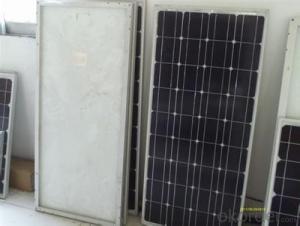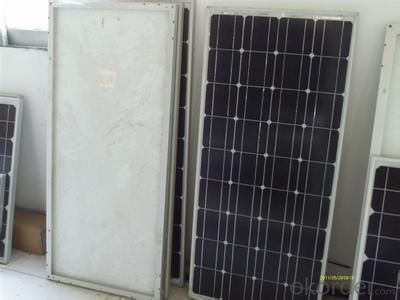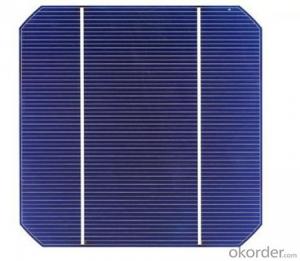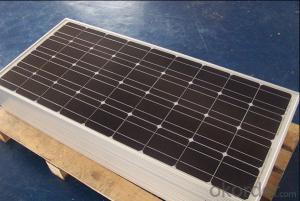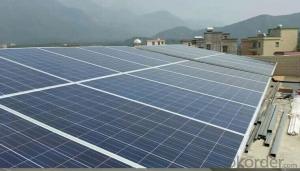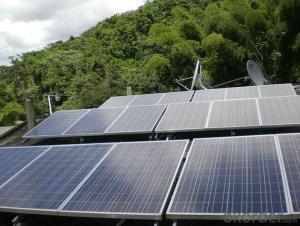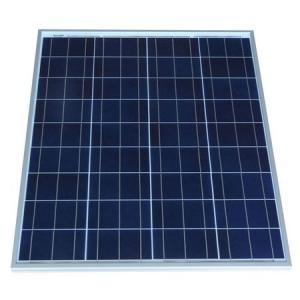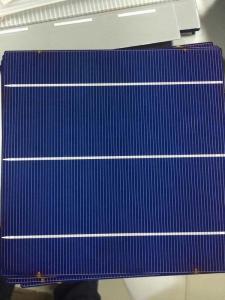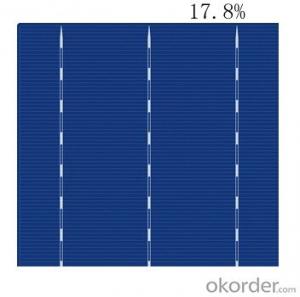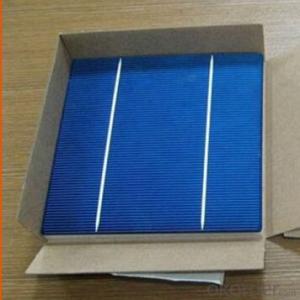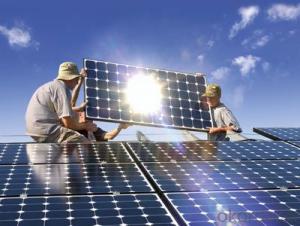CZTSe Solar Cells - Cheap Monocrystalline Solar Cells for Sale
- Loading Port:
- China Main Port
- Payment Terms:
- TT OR LC
- Min Order Qty:
- -
- Supply Capability:
- -
OKorder Service Pledge
Quality Product, Order Online Tracking, Timely Delivery
OKorder Financial Service
Credit Rating, Credit Services, Credit Purchasing
You Might Also Like
Quick Details
| Place of Origin: | Model Number: | ||||
| Material: | Size: | Number of Cells: | |||
| Max. Power: | max power voltage: | max power current: | |||
| cell efficency: |
Packaging & Delivery
| Packaging Detail: | Standard package |
| Delivery Detail: | 30days |
Specifications
200w Cheap Monocrystalline Solar Cells for Sale
1.High efficiency solar cell
2.Mono
3.20W
4.CE,Rohs
- Q: Can solar cells be used for military applications?
- Yes, solar cells can be used for military applications. They can provide a reliable and renewable source of power in remote and off-grid locations, reducing the dependency on fuel logistics. Solar cells can be used to power communication systems, surveillance equipment, and even provide energy for soldiers in the field. Additionally, solar-powered devices are silent, making them suitable for stealth operations.
- Q: What is the role of power optimizers in solar cell systems?
- Power optimizers play a crucial role in solar cell systems by maximizing the energy output of each individual solar panel. They work by individually monitoring and optimizing the performance of each panel, thereby minimizing power losses caused by shading, mismatch, and other factors. This optimization helps to improve the overall efficiency and reliability of the solar system, ensuring that it operates at its highest potential and delivers maximum energy yields.
- Q: Can solar cells be used for indoor applications?
- Yes, solar cells can be used for indoor applications. While solar cells are primarily designed to harness sunlight and convert it into electricity, they can also generate power from indoor lighting sources such as fluorescent or LED lights. However, the amount of electricity generated indoors is generally lower compared to outdoor conditions due to the reduced intensity of indoor lighting. Nonetheless, solar cells can still be used effectively for powering small devices or charging batteries in indoor settings.
- Q: What is the impact of solar cells on wildlife?
- Solar cells have a minimal impact on wildlife compared to other forms of energy generation. While some studies suggest that solar farms can disrupt or displace certain species, the overall impact is considered low. The installation of solar panels can provide shade and shelter for certain animals, and the reduction in greenhouse gas emissions associated with solar energy helps mitigate the effects of climate change on wildlife habitats.
- Q: Can anybody tell me how to make a solar cell at home?
- To make a solar cell at home, you need to have things like these : Thin copper sheeting, Metal shears an emery cloth, etc.
- Q: How to explain to students how the solar cells are made?
- You'd better explain it step by step, following the lab experiments.
- Q: Can solar cells be used in powering irrigation systems?
- Yes, solar cells can be used to power irrigation systems. Solar panels can convert sunlight into electricity, which can then be used to power pumps and other components of an irrigation system. This is a sustainable and cost-effective solution, especially in areas with abundant sunlight, as it reduces the dependency on traditional energy sources and can provide a reliable source of power for irrigation.
- Q: What materials are commonly used to make solar cells?
- The most commonly used materials to make solar cells are silicon, cadmium telluride, and copper indium gallium selenide.
- Q: How do solar cells perform in snowy conditions?
- Solar cells do not perform as efficiently in snowy conditions because the snow cover blocks sunlight from reaching the cells. However, modern solar panels are designed to be durable and can still generate some electricity even in snowy conditions. Additionally, when the snow melts or is removed from the panels, they can resume their normal performance.
- Q: Can solar cells be used in urban areas?
- Yes, solar cells can be used in urban areas. In fact, they are increasingly being used in cities worldwide as a renewable energy solution. With the advancement of technology, solar cells can be installed on rooftops, facades, and even integrated into urban infrastructure like streetlights and bus shelters. This allows urban areas to harness clean energy from the sun and reduce their dependence on fossil fuels, contributing to a more sustainable and environmentally friendly future.
Send your message to us
CZTSe Solar Cells - Cheap Monocrystalline Solar Cells for Sale
- Loading Port:
- China Main Port
- Payment Terms:
- TT OR LC
- Min Order Qty:
- -
- Supply Capability:
- -
OKorder Service Pledge
Quality Product, Order Online Tracking, Timely Delivery
OKorder Financial Service
Credit Rating, Credit Services, Credit Purchasing
Similar products
Hot products
Hot Searches
Related keywords
